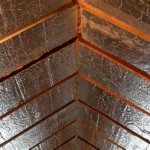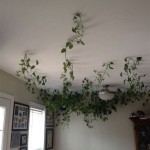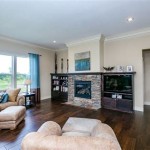Ceiling Design Photos For Living Room: A Comprehensive Guide
The living room, often considered the heart of the home, deserves meticulous attention in its design. The ceiling, frequently overlooked, is a crucial element that can significantly impact the overall aesthetic and ambiance of the space. Exploring various ceiling design options, as captured in ceiling design photos for living rooms, allows homeowners and designers to make informed choices that complement the room's style, size, and lighting scheme.
Numerous factors contribute to the success of a living room ceiling design. These considerations range from the architectural structure of the room to the desired atmosphere and personal preferences. Furthermore, advancements in materials and construction techniques offer an array of possibilities, making the selection process both exciting and challenging. This article provides a detailed overview of popular ceiling design options for living rooms, drawing inspiration from a diverse range of ceiling design photos.
Understanding the Impact of Ceiling Height and Shape
Ceiling height plays a significant role in determining the most suitable design. In rooms with lower ceilings, designs that create the illusion of height are often preferred. Flat ceilings painted in a light, reflective color can visually expand the space. Conversely, living rooms with high ceilings offer greater design flexibility. Exposed beams, coffered ceilings, or even multi-tiered designs can be implemented to add visual interest and dimension without making the room feel cramped.
The shape of the ceiling itself also influences design choices. Standard rectangular or square rooms present fewer challenges than rooms with angled or vaulted ceilings. In rooms with sloped ceilings, for example, strategic lighting placement and the use of contrasting colors can effectively balance the asymmetry and create a more harmonious look. Furthermore, architectural anomalies, such as bulkheads or soffits, can be incorporated into the design to create unique focal points or to conceal unsightly elements.
Ceiling design photos frequently showcase how different heights and shapes are addressed. For instance, photos of living rooms with vaulted ceilings often feature exposed wooden beams that accentuate the height and create a rustic or farmhouse-inspired aesthetic. Alternatively, in rooms with lower ceilings, photos might demonstrate the use of recessed lighting and minimal ornamentation to maintain a sense of openness. Analyzing these visual examples provides valuable insight into adapting ceiling designs to specific architectural contexts.
Exploring Popular Ceiling Design Styles
Several distinct ceiling design styles are commonly featured in living room ceiling design photos. Each style brings its unique characteristics and can be tailored to match various interior design themes. Understanding these styles is essential for selecting the most appropriate option for a given living room.
Flat Ceilings: The most common and simplest type, flat ceilings provide a clean and minimalist look. While seemingly basic, flat ceilings offer numerous design possibilities through paint color, texture, and lighting. A smooth, matte finish is often preferred for a modern and understated aesthetic, while textured finishes can add subtle visual interest. Recessed lighting, pendant lights, and chandeliers can be strategically placed to enhance the overall ambiance.
Tray Ceilings: Tray ceilings feature a recessed central area, creating a raised border around the perimeter of the room. This design adds depth and dimension to the ceiling, making it appear higher than it actually is. Tray ceilings can be further enhanced with crown molding, decorative painting, or ambient lighting within the recessed area. They are particularly well-suited for formal living rooms and spaces where a touch of elegance is desired.
Coffered Ceilings: Coffered ceilings consist of a grid of recessed panels, creating a visually striking and architecturally rich effect. They often feature intricate moldings and detailed craftsmanship. Coffered ceilings are ideal for larger living rooms with high ceilings, as they can add a sense of grandeur and sophistication. They can also be adapted to smaller spaces with simpler designs and shallower recesses.
Vaulted Ceilings: Vaulted ceilings, characterized by their arched or angled shapes, offer a dramatic and spacious feel. There are various types of vaulted ceilings, including barrel vault, groin vault, and cathedral vault. Exposed beams are commonly used to accentuate the shape and structure of vaulted ceilings, creating a rustic or modern farmhouse aesthetic. Strategic lighting placement is crucial for highlighting the architectural features and ensuring adequate illumination.
Suspended Ceilings (Drop Ceilings): Suspended ceilings consist of a grid of tiles or panels suspended below the original ceiling. While often used for functional purposes, such as concealing wiring or ductwork, suspended ceilings can also be incorporated into decorative designs. Modern suspended ceiling systems offer a variety of materials, colors, and textures, allowing for creative and contemporary looks. However, it's important to note that suspended ceilings can lower the overall ceiling height, making them less suitable for rooms with already low ceilings.
Ceiling design photos provide a visual catalog of these different styles. By examining these photos, homeowners can gain a better understanding of how each style looks in practice and how it can be adapted to their specific living room.
Incorporating Lighting and Materials
The integration of lighting and the selection of appropriate materials are pivotal to the success of any ceiling design. Lighting not only illuminates the room but also plays a crucial role in shaping the ambiance and highlighting architectural features. Materials, on the other hand, contribute to the overall aesthetic and can influence the acoustics of the space.
Lighting Options: A variety of lighting options are available for living room ceilings, each offering distinct advantages. Recessed lighting provides a clean and unobtrusive source of general illumination. Pendant lights can serve as focal points and add visual interest. Chandeliers offer a touch of elegance and are often used in formal living rooms. Track lighting provides adjustable and directional illumination, ideal for highlighting artwork or architectural details. Ambient lighting, such as cove lighting or LED strips, can create a soft and inviting glow. Layering different types of lighting is often the most effective approach, allowing for flexible control over the room's atmosphere.
Material Choices: The materials used for ceiling finishes can significantly impact the overall look and feel of the living room. Drywall is the most common and versatile material, providing a smooth and paintable surface. Wood adds warmth and texture, often used for exposed beams or paneling. Metal can create a modern and industrial aesthetic. Acoustic panels can improve sound absorption and reduce echo, making them ideal for home theaters or spaces where noise control is a concern. Fabric panels can add a soft and luxurious touch. The choice of materials should be carefully considered to complement the room's style and functionality.
Combining Lighting and Materials: The synergy between lighting and materials is crucial for achieving a cohesive and visually appealing ceiling design. For example, exposed wooden beams can be highlighted with strategically placed spotlights or pendant lights. A tray ceiling can be accentuated with cove lighting, creating a soft and indirect glow. Textured paint finishes can be enhanced with subtle ambient lighting. Carefully considering how lighting interacts with different materials can elevate the overall design and create a truly unique and inviting living room.
Ceiling design photos often showcase innovative combinations of lighting and materials. Analyzing these images can inspire homeowners to experiment with different combinations and create their own personalized ceiling designs. For instance, photos might demonstrate the use of LED strip lighting around the perimeter of a coffered ceiling, highlighting the architectural details and creating a dramatic effect. Or, photos might showcase the use of reclaimed wood beams paired with modern pendant lights, creating a rustic yet contemporary aesthetic.
In conclusion, the design of a living room ceiling requires careful consideration of various factors, including ceiling height, shape, style, lighting, and materials. By exploring the possibilities presented in ceiling design photos, homeowners and designers can gain inspiration and make informed choices that enhance the beauty, functionality, and ambiance of the living room. The ceiling, when thoughtfully designed, can transform from a mere structural element into a captivating focal point.

15 Living Room Ceiling Designs You Need To See Top Inspirations

33 Modern Ceiling Design Ideas For All The Rooms In Your Home Decoist

50 Budget Friendly False Ceiling Designs For Every Home 2025

Luxurious Modern Living Room And Ceiling Designs Trend Of 2024 Plan N Design

Stunning Ceiling Design Ideas For Drawing Rooms

7 Simple Ceiling Designs To Transform Your Halls

60 Latest Pop Ceiling Designs For Hall 2025

Cozy Living Room Wallpaper Ideas Latest Designs

10 Best Ceiling Designs For Living Rooms Latest Family Room Ideas

Top 100 Modern Ceiling Design For Living Room Ideas 10 Best Stylish Space
Related Posts








